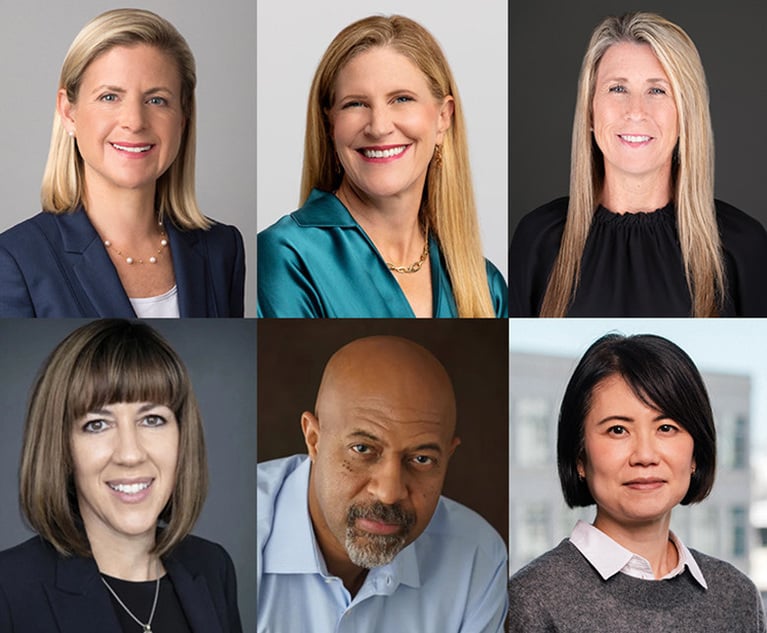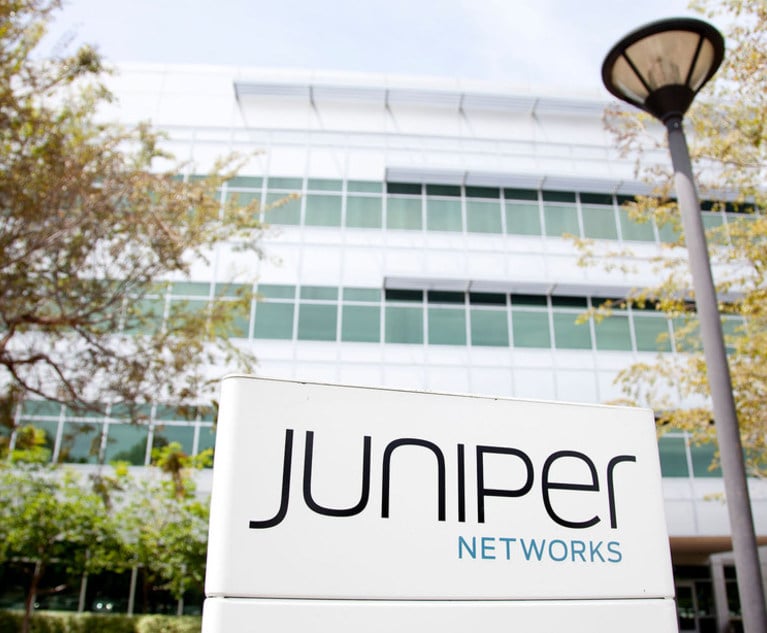Kleen-ing up e-discovery
When it comes to litigation, the e-discovery tail is wagging the litigation dog.
August 13, 2012 at 05:30 AM
5 minute read
The original version of this story was published on Law.com
When it comes to litigation, the e-discovery tail is wagging the litigation dog. More than wagging, the tail is throwing the dog around like a judo master. Discovery costs represent a greater percentage of litigation budgets than anyone foresaw 20 years ago, greater than any other litigation cost, by far. The increase in budgets is directly related to the overwhelming volume of information that corporations create. We have gone from the megabyte era to the gigabyte era, skipped the terabyte era, and we're now firmly in the petabyte era.
Our ability to put human eyes on all documents that need to be reviewed is limited by petabyte math: number of available reviewers multiplied by the number of available hours multiplied by the number of documents per hour per reviewer. But the numbers don't add up. There are just too many documents, and we've reached the mathematical limit of human review. More than reached it, we've blown past it with nary a rearward glance. To give one recent example, a company under investigation disclosed over 300 million emails to its regulator. If every employee of the regulator—from the director down to the janitor—did nothing but review emails, every day, all day, it would take them more than four years to read them.
Enter the mathematicians. Sophisticated algorithms are able to “understand” the contents of a document, perform “find more like me” searches and then suggest documents to be reviewed. Humans look at the suggestions, and feed their decisions back into the algorithm, which then suggests more documents. This iterative approach produces extraordinary efficiencies in both number of documents that have to be reviewed and in the accuracy of the review.
This workflow is called predictive coding. Independent tests have shown predictive coding can locate a high percentage of sought-after documents after reviewing, in one case, less than 1 percent of the total collection. Predictive coding is revolutionizing the e-discovery industry, slowly.
Enter the courts. Predictive coding was introduced years ago; it's taken the courts time to catch up. After years of use by early adopters even absent judicial imprimatur, predictive coding has recently been the subject of three court cases. In two of the cases, courts have approved the parties' use of predictive coding: in one case, the parties agreed on the principle but not the implementation; in the other, the court allowed its use in the face of one party objecting.
The third is the most interesting. The question is not whether predictive coding can be used, the question is whether it must be used. After years of waiting for judicial acceptance, the legal community has jumped directly to requesting judicial mandate. This is the Kleen Products case, which is in front of Magistrate Judge Nan Nolan in Chicago. Judge Nolan knows her e-discovery; she's one of the leaders of the 7th Circuit's E-discovery Pilot Program.
The lawsuit—a run-of-the-mill antitrust action—was proceeding normally until the defendants turned over their documents. The plaintiffs objected to the production, claiming that because their opponents didn't use predictive coding (which they described as “content based advanced analytics”) and didn't take advantages of the enhanced accuracy and efficiency, that the production was faulty. They are requesting the court to require a re-review, this time using predictive coding.
The legal requirement is that a party has to produce relevant documents. The search for and review of documents that are potentially relevant must be reasonable. The defendants used a keyword search to find relevant documents.
The problem is that keyword search, especially used on a collection of unknown documents, is notoriously inaccurate and imprecise. It is also the current “gold standard.” Because the producing party used the current gold standard, that should have been the end of the story. But the Judge has held two days of hearings, complete with expert testimony, about what kind of advanced algorithmic review tools are available, and what it means for e-discovery.
If Judge Nolan rules that the current “gold standard” is actually a “fools gold standard,” it will have a dramatic impact on the way litigants review documents, but not a negative impact. Greater efficiency and greater accuracy are good things. Using advanced technology will drive the cost of discovery down, and will bend the mathematical limit under our capability. It will also create some ethical issues: can attorneys charge clients for time spent doing keyword searches? Is failure to use predictive coding malpractice?
These and other questions are the consequence of one potential ruling in the Kleen case. I don't know if the world is quite ready for this: after all, it's only the first time these issues have been raised in court. One thing I know for sure: it won't be the last time.
This content has been archived. It is available through our partners, LexisNexis® and Bloomberg Law.
To view this content, please continue to their sites.
Not a Lexis Subscriber?
Subscribe Now
Not a Bloomberg Law Subscriber?
Subscribe Now
NOT FOR REPRINT
© 2025 ALM Global, LLC, All Rights Reserved. Request academic re-use from www.copyright.com. All other uses, submit a request to [email protected]. For more information visit Asset & Logo Licensing.
You Might Like
View All
Exits Leave American Airlines, SiriusXM, Spotify Searching for New Legal Chiefs
2 minute read
'A Warning Shot to Board Rooms': DOJ Decision to Fight $14B Tech Merger May Be Bad Omen for Industry

'Incredibly Complicated'? Antitrust Litigators Identify Pros and Cons of Proposed One Agency Act
5 minute readTrending Stories
- 1Uber Files RICO Suit Against Plaintiff-Side Firms Alleging Fraudulent Injury Claims
- 2The Law Firm Disrupted: Scrutinizing the Elephant More Than the Mouse
- 3Inherent Diminished Value Damages Unavailable to 3rd-Party Claimants, Court Says
- 4Pa. Defense Firm Sued by Client Over Ex-Eagles Player's $43.5M Med Mal Win
- 5Losses Mount at Morris Manning, but Departing Ex-Chair Stays Bullish About His Old Firm's Future
Who Got The Work
J. Brugh Lower of Gibbons has entered an appearance for industrial equipment supplier Devco Corporation in a pending trademark infringement lawsuit. The suit, accusing the defendant of selling knock-off Graco products, was filed Dec. 18 in New Jersey District Court by Rivkin Radler on behalf of Graco Inc. and Graco Minnesota. The case, assigned to U.S. District Judge Zahid N. Quraishi, is 3:24-cv-11294, Graco Inc. et al v. Devco Corporation.
Who Got The Work
Rebecca Maller-Stein and Kent A. Yalowitz of Arnold & Porter Kaye Scholer have entered their appearances for Hanaco Venture Capital and its executives, Lior Prosor and David Frankel, in a pending securities lawsuit. The action, filed on Dec. 24 in New York Southern District Court by Zell, Aron & Co. on behalf of Goldeneye Advisors, accuses the defendants of negligently and fraudulently managing the plaintiff's $1 million investment. The case, assigned to U.S. District Judge Vernon S. Broderick, is 1:24-cv-09918, Goldeneye Advisors, LLC v. Hanaco Venture Capital, Ltd. et al.
Who Got The Work
Attorneys from A&O Shearman has stepped in as defense counsel for Toronto-Dominion Bank and other defendants in a pending securities class action. The suit, filed Dec. 11 in New York Southern District Court by Bleichmar Fonti & Auld, accuses the defendants of concealing the bank's 'pervasive' deficiencies in regards to its compliance with the Bank Secrecy Act and the quality of its anti-money laundering controls. The case, assigned to U.S. District Judge Arun Subramanian, is 1:24-cv-09445, Gonzalez v. The Toronto-Dominion Bank et al.
Who Got The Work
Crown Castle International, a Pennsylvania company providing shared communications infrastructure, has turned to Luke D. Wolf of Gordon Rees Scully Mansukhani to fend off a pending breach-of-contract lawsuit. The court action, filed Nov. 25 in Michigan Eastern District Court by Hooper Hathaway PC on behalf of The Town Residences LLC, accuses Crown Castle of failing to transfer approximately $30,000 in utility payments from T-Mobile in breach of a roof-top lease and assignment agreement. The case, assigned to U.S. District Judge Susan K. Declercq, is 2:24-cv-13131, The Town Residences LLC v. T-Mobile US, Inc. et al.
Who Got The Work
Wilfred P. Coronato and Daniel M. Schwartz of McCarter & English have stepped in as defense counsel to Electrolux Home Products Inc. in a pending product liability lawsuit. The court action, filed Nov. 26 in New York Eastern District Court by Poulos Lopiccolo PC and Nagel Rice LLP on behalf of David Stern, alleges that the defendant's refrigerators’ drawers and shelving repeatedly break and fall apart within months after purchase. The case, assigned to U.S. District Judge Joan M. Azrack, is 2:24-cv-08204, Stern v. Electrolux Home Products, Inc.
Featured Firms
Law Offices of Gary Martin Hays & Associates, P.C.
(470) 294-1674
Law Offices of Mark E. Salomone
(857) 444-6468
Smith & Hassler
(713) 739-1250







